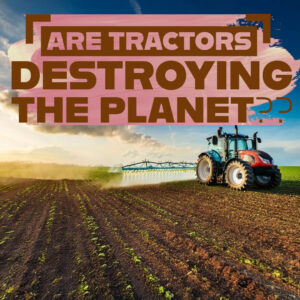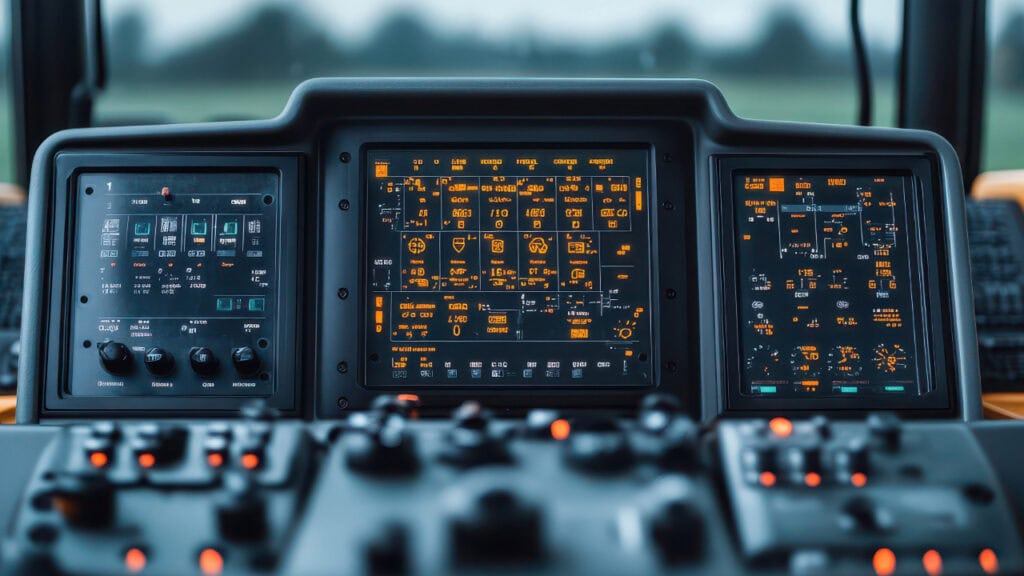Modern Farming: The Culmination of Hundreds of Steps Toward Restoration and Sustainability
Modern farming practices have significantly reduced environmental impacts compared to older, fossil fuel-intensive techniques. Where traditional farming relied heavily on fossil fuels for machinery, fertilizers, and pesticides, today’s practices focus on sustainability, efficiency, and resource conservation.
Lower Fossil Fuel Dependence
Advances in technology, like GPS-guided equipment, have reduced fuel consumption by optimizing field operations. The integration of renewable energy, such as solar and wind, powers farm operations while decreasing greenhouse gas emissions. The USDA supports renewable energy adoption through programs like the Rural Energy for America Program (REAP) (https://www.rd.usda.gov/programs-services/energy-programs/rural-energy-america-program-renewable-energy-systems-energy-efficiency).
Improving Soil and Water Management
No-till farming and cover crops are key strategies for enhancing soil health and conserving resources. These practices protect against erosion, sequester carbon, and improve water retention. The Natural Resources Conservation Service (NRCS) offers resources and financial incentives to farmers adopting these methods (https://www.nrcs.usda.gov).
Modern irrigation systems like drip irrigation save water and reduce energy usage, making farms more efficient. Programs such as the NRCS Environmental Quality Incentives Program (EQIP) help farmers transition to these efficient practices (https://www.nrcs.usda.gov/programs/environmental-quality-incentives-program).
Integrated Pest Management (IPM)
IPM strategies combine biological, cultural, and mechanical pest control, minimizing chemical pesticide use and promoting ecosystem health. The Sustainable Agriculture Research and Education (SARE) program offers guides on implementing IPM (https://www.sare.org).
Modern agriculture, supported by farmer-friendly programs from the USDA, NRCS, and FSA, has made tremendous strides toward sustainability. These practices ensure a greener future while maintaining the productivity and viability of farming operations. For more information on sustainable farming, visit https://www.farmers.gov.

Modern tractors have transformed farming by offering unmatched efficiency, precision, and reduced environmental impact. Today’s tractors are equipped with advanced technology such as GPS guidance, auto-steering, and real-time data monitoring, enabling farmers to optimize field operations and minimize fuel use. These features reduce overlapping passes and improve accuracy, saving time, resources, and money.
Fuel efficiency has dramatically improved in recent years. Manufacturers now design engines to meet stringent emissions standards, reducing carbon footprints without sacrificing power. Many tractors use diesel-electric hybrid systems, maximizing energy efficiency while lowering operating costs.
Variable-rate technology (VRT) is another breakthrough. With VRT, tractors can adjust seed, fertilizer, and pesticide application rates on the go, ensuring precise inputs based on soil and crop needs. This not only improves yields but also reduces waste and environmental harm.
 Additionally, innovations like telematics allow farmers to remotely monitor tractor performance, enabling timely maintenance and minimizing downtime. Some tractors even use artificial intelligence to enhance decision-making in real-time.
Additionally, innovations like telematics allow farmers to remotely monitor tractor performance, enabling timely maintenance and minimizing downtime. Some tractors even use artificial intelligence to enhance decision-making in real-time.
Supported by programs like the USDA’s Environmental Quality Incentives Program (EQIP) (https://www.nrcs.usda.gov/programs/environmental-quality-incentives-program), these advancements empower farmers to achieve greater productivity with fewer resources. Modern tractors are the cornerstone of sustainable agriculture.